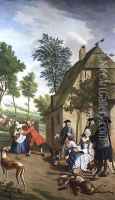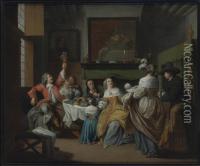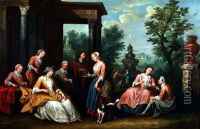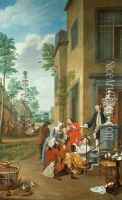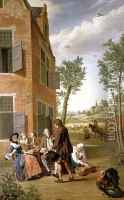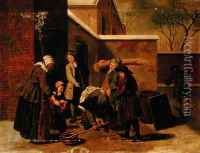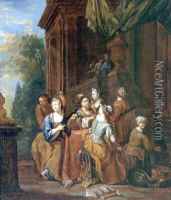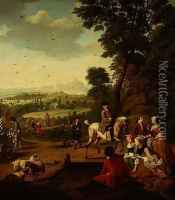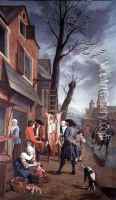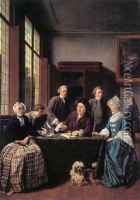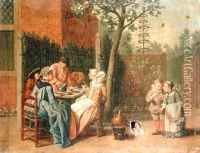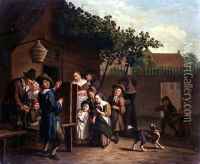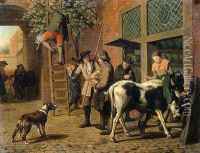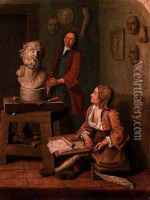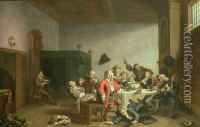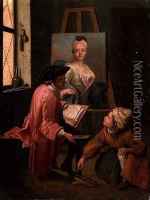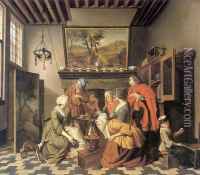Jan Jozef, the Younger Horemans Paintings
Jan Jozef Horemans the Younger was a Flemish painter born in 1714 in Antwerp, a city that was then part of the Spanish Netherlands. He was part of an artistic family, with his father, Jan Jozef Horemans the Elder, also being a respected painter of his time. Horemans the Younger is known for his continuation of the family tradition in painting, particularly focusing on genre scenes, much like his father. His works often depicted domestic and everyday scenes, following the Flemish genre tradition, which was popular during the 17th and 18th centuries.
Horemans the Younger received his artistic training from his father and eventually became a master in the Antwerp Guild of St. Luke in 1737, indicating his recognition as a professional artist. His paintings, like those of his father, were characterized by a keen attention to detail and a vibrant representation of middle-class life. He was particularly adept at capturing the textures of different materials and the play of light in interior settings. His genre scenes often included gatherings of people, such as family celebrations, tavern scenes, and other social events, rendered with warmth and liveliness.
Throughout his career, Horemans the Younger enjoyed a certain level of local success. However, unlike artists who gained international fame, Horemans remained relatively close to his roots in Antwerp. Despite this, his works did gain some attention outside of his immediate region, as genre painting was a popular style that appealed to a broad audience in Europe. His contribution to Flemish art is often considered within the context of the Horemans family legacy, with both he and his father contributing to the cultural tapestry of their time.
Jan Jozef Horemans the Younger continued to produce art until his death in 1790. While he may not be as widely recognized as some of his contemporaries, his paintings remain valued for their historical depiction of Flemish society and the continuation of genre painting traditions. Today, his works can be found in various art collections and museums, offering a window into the life and customs of 18th-century Flanders.
